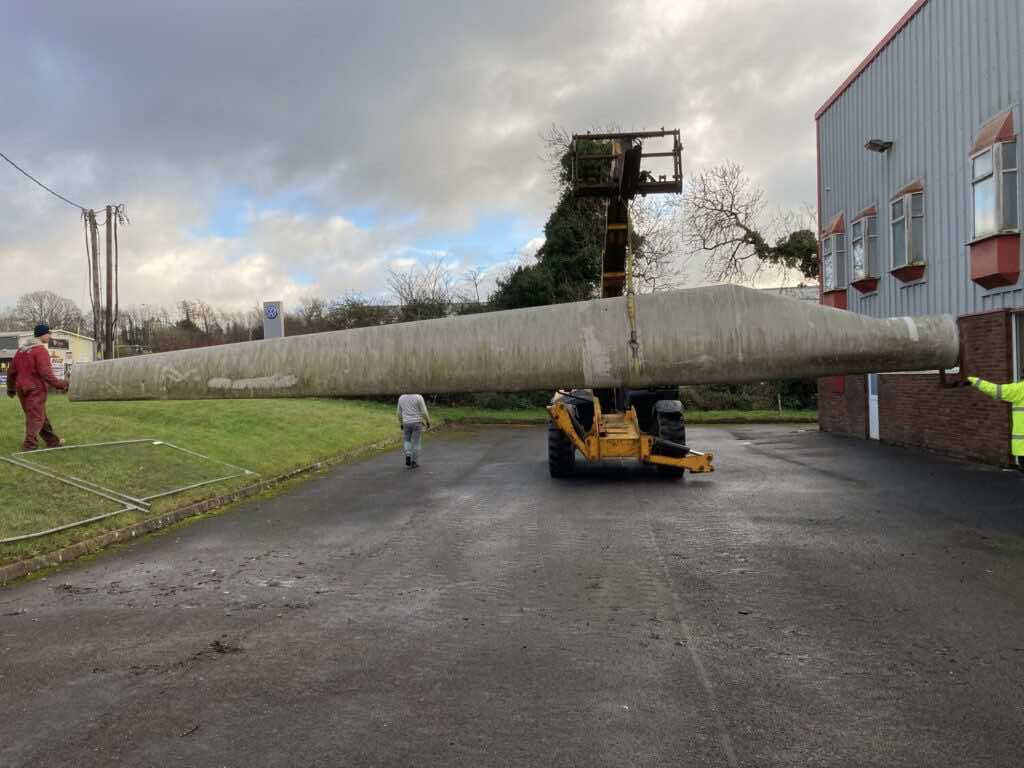On an old abandoned railroad trackbed between Midleton and Youghal in County Cork, Irish workers recently found the rusty wreckage of an ancient railway bridge and replaced it with a pedestrian bridge.
Old wind turbine blades may be utilized for infrastructure projects, according to the architects behind these bridges. It saves energy that would otherwise be used to create new construction materials. Civil engineer Kieran Ruane initially saw concept designs for a wind turbine-powered bridge.
“It was a no-brainer that this needed to be investigated and trialed, at least,” Ruane, a lecturer at Ireland’s Munster Technological University and a member of Re-Wind, the research network behind Ireland’s new blade bridge, told The Verge.
In landfills, wind turbine blades take up a lot of space. Once they’re there, the ultra-strong, fiber-reinforced polymers they’re made of don’t disintegrate easily. Mothballed wind turbine blades are typically destined for landfills if not properly sorted. Incinerating them for electricity contributes to pollution.
Anmet, a metal recycling company, has developed into a small business that makes outdoor furniture from abandoned wind turbine blades. Bridges, according to Sobczyk, will be the company’s next commercial initiative.
The company’s first blade bridge took three years to get completed. First, the defunct wind farm blades were subjected to a series of technical testing before being dismantled. Next, it was used to form the main support sections for a pedestrian footbridge. Finally, Amnet completed a bridge across a river in Szprotawa. Anmet paid for the bridge with a European Union grant to pay the cost of the engineering testing.
Sobczyk hopes Amnet will offer pricing comparable with traditional steel and concrete bridges while also addressing a waste disposal problem by removing obsolete wind turbine blades from the hands of wind energy corporations.
The new Irish blade bridge will be cost-competitive with more traditional bridges while conserving natural resources. Using defunct blades from a wind farm in Belfast, the team saved over 800 kg of carbon emissions, according to Angela Nagle, a civil engineering Ph.D. candidate at the University College Cork and a member of the ReWind network.
The team did nine months of engineering and materials testing to inspire the design of ReWind’s first bridge. “Perhaps the key question in some ways” is if additional testing can be simplified to save time and scale-up manufacturing, explains Ruane.
If additional blade manufacturers and wind energy companies see structures like these, Ruane believes the repurposing market will “get more industry buy-in.”
The initial blade bridge projects will be put to the actual test, which is public opinion. Even though some people have considered that the bridges look unusual, Sobczyk claims that “80 to 90 percent” of the comments he’s received have been positive. When Anmet first started putting up repurposed wind blade furniture around town, he was met with a lot of criticism.
Some people have voiced discontent with it; however, Sobczyk believes that negative sentiments about the furnishings started to shift as residents began to spend more time outside during the summer.
Although ReWind’s blade bridge will not operate until spring, Anmet’s bridge is now in action.

